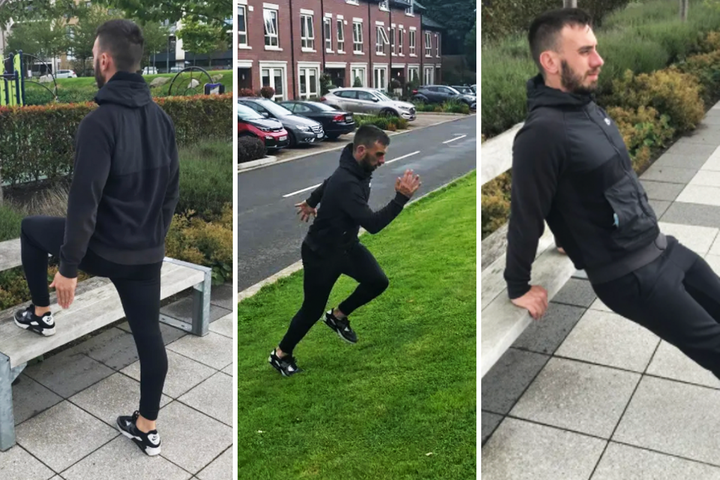
During the depths of lockdown, the most visible shared experience – other than the weekly clap for the NHS – was the daily exercise people took in their local parks. Running, walking, and stretching became our means of attempting to upkeep some normality – as many of us tried to keep our minds healthy.
Some of us are yet to see the advantages of outdoor exercise, having been glued to the gym (or sofa) for so long. But it’s not loo late to start. Personal trainer and fitness expert Ben Walker, owner of Anywhere Fitness, is a huge advocate for it – and has given us some tips to get started.
Firstly, it’s important to remind ourselves of the huge benefits exercise outdoors can have on our mental health. “Cabin fever is an issue that arises from spending too many hours indoors,” says Walker. “People experiencing it are subjected to feelings of distress, restlessness, irritability and depression.
“By changing your environment for one or two hours per day, you’ll feel more motivated during your workout, and avoid feelings of claustrophobia at home. This can lead to increased productivity at work.”
Another benefit is that you can pretty much exercise anywhere outside – so you’ll never be able to make the excuse that the gym’s too far away! It’ll save you money on membership costs and transport fees, too, as well as giving you the flexibility to do it as and when you want.
First up, you might want to get some basic kit.
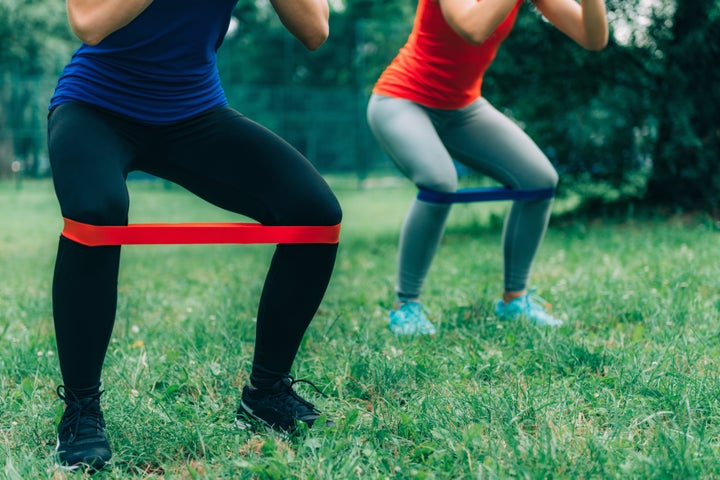
“Resistance bands – I like these ones – are the ultimate kit to carry around,” explains Walker. “They’re almost weightless and fold into any size. Impressively, you can complete a full body workout with bands alone. Tie them around your legs or ankles and push outwards for a lower body workout, or stretch them apart with your hands for an upper body workout to extend your muscles.”
If you’re struggling to figure out how to use the bands, type “resistance band workout” into YouTube, and you’ll be greeted with 100s of how-to videos, with workouts you can do outside.
“Exercise mats – I use this one – are also low in weight and easy to carry rolled up. This is best used for your floor exercises during your outdoor workout. With a durable mat, you can perform yoga, Pilates, strength and core exercises, HIIT drills, and also finish your session with a routine of stretching.”
Next, let’s talk running and jogging.
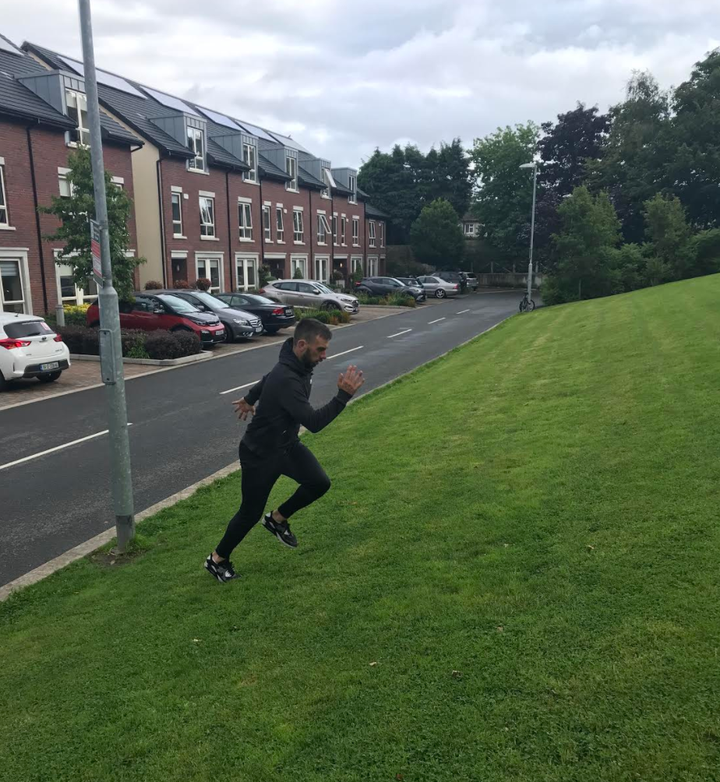
Running is a great way to stay fit as you don’t need any equipment. It can take you anywhere, but if you’ve never run before, it might take a bit of getting used to. “The best way to overcome fears is by taking baby steps,” says Walker. “This is necessary for alerting your body gradually to exercise and avoiding injury.”
Get started by mapping a circuit that can be manageable and measurable for recording your times over the forthcoming weeks (of course, if you don’t fancy timing yourself, that’s absolutely fine, too). Start with a circuit that’s roughly 2k, suggests Walker, and increase your distance bit-by-bit.
“Make sure to invest in proper running shoes,” he adds. “You’ll need the right footwear to avoid common overuse injuries by having midsole cushioning and arch support. I particularly like these.” You might also want to get some running socks, as they allow your feet to breathe easily – and help you avoid blisters!

Walker suggests making a four-week goal to get into the groove of your running programme.
In the first week: “Complete the circuit (2k) by walking at a brisk speed three or four times on different days. Record the time it takes to complete the course each time. Set a goal of completing each session at a quicker time to increase speed and intensity.”
In the second week: “Start each workout at the brisk walking speed recorded from the last session. To get properly warmed up, walk at this speed for the first half of the course, before jogging at light speed for the remainder.”
In the third and fourth week: “Focus on running or jogging for the entire duration of your circuit. In the third week, start by jogging at a light pace for the first half of your run. For the remaining half, start to pick up the pace and if you can, increase your speed as you make your way homeward.”
At any time, if you’re finding the distance too much, begin with 1km and follow the same routine until you feel comfortable increasing the amount upwards to 5k, and eventually, 10k. “Remember to do so simple stretches after each performance to avoid injury before your next workout,” he adds.
Now, it’s time to vary your workouts to target different muscles.
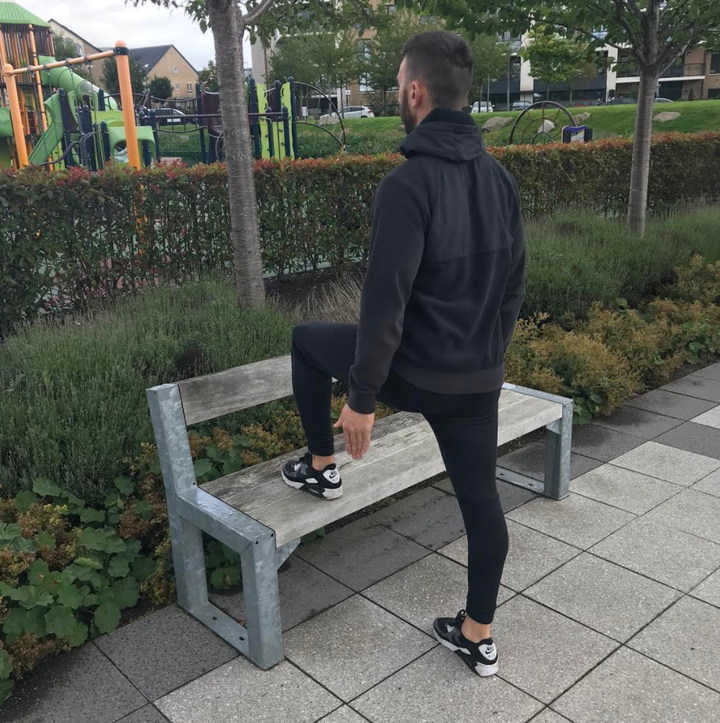
“The ultimate goal of an outdoor workout is to challenge your aerobic and anaerobic systems,” he explains. “We burn fat cells from aerobic activity and sugars and carbs from anaerobic activity. When we complete an efficient full body workout, we burn energy from both systems.”
Anaerobic exercises mostly include weight training exercises, which help us gain lean muscle mass that also burns more calories at rest.
Here are some outdoor exercises to try:
Sprints.
When getting to a park, Walker suggests starting the first half of your session by doing some sprints. Run lightly for 100m and sprint for 50 metres if you can. You can increase the length and variations of your sprints as you get fitter. “This is a great way to get all energy systems firing and burning calories effectively. After this, move on to more specific exercises.”
Bench step-ups.
“Step-ups (step up onto the bench, one leg at a time, then down again) target all the muscles in the lower half of the body: quads, hamstrings, glutes, calves and also your hips. They also promote balance and stability and strengthen your core. Step-ups require a lot of movement and exertion from large muscle groups which is the reason why they burn a lot of energy.”
Bench tricep dips.
“Tricep dips are a great isolation exercise for your arms,” says Walker. “Doing this exercise on an outdoor bench is no different to the equipment you’d use in a gym. Slowly lower your body as far down as you can, and then use your arms to bring your body back up to a straight-armed position again, like below.”

Bench push-ups.
Doing push-ups at an elevated height can be easier than normal ones, he says. Try and maximise how many repetitions you can do once you’ve mastered a set. Once you can achieve 20, try and approach push-ups on the floor with a mat.
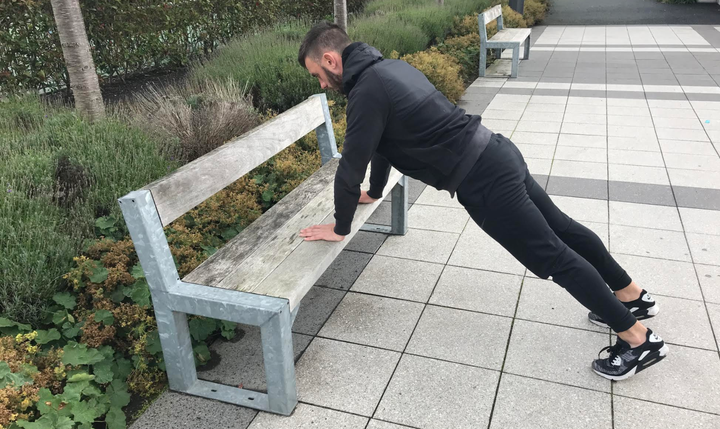
Playground bar exercises.
Bars in a playground are a great way to test your strength, especially your upper body. “Find a straight horizontal bar in the park or playground (when kids aren’t around) that’s roughly above knee level. Lying on the floor, hold the bar with each hand at shoulder width. Use the muscles in your back to pull yourself towards the bar and lower yourself to the floor again. Repeat this exercise for 12-20 repetitions and take a short rest.”
“Bars can also be great for pull-ups. Let your body hang straight down with your arms fully extended (see below). Pull yourself up and squeeze your lats, rhomboids, and scapulae muscles until your chin is over the bar. Lower yourself to the same position to repeat the exercise.”
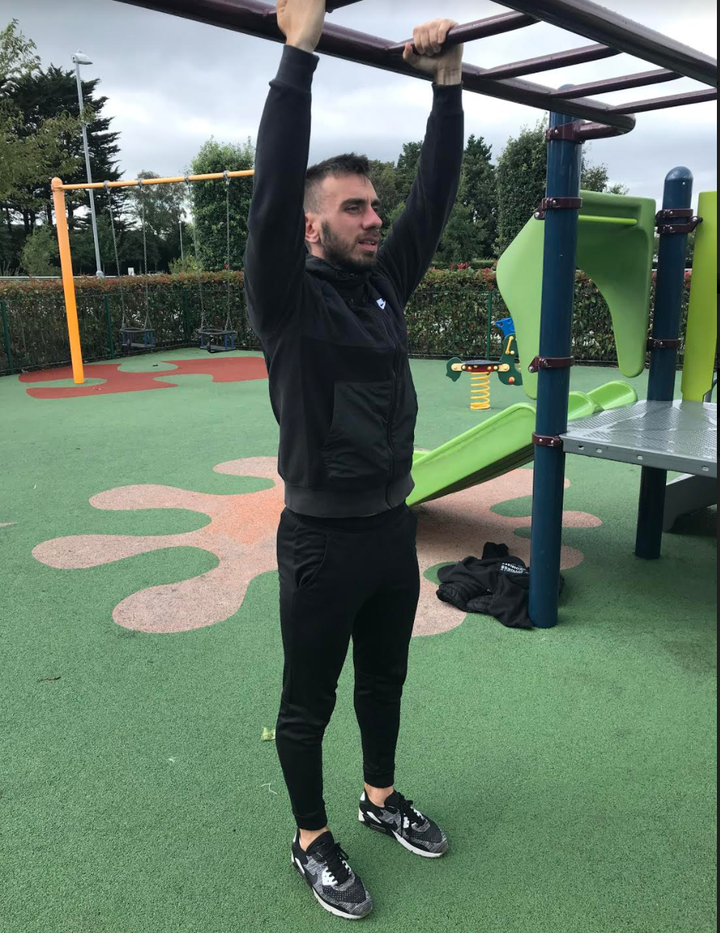
Resistance bands exercises.
If you’ve invested in some resistance bands, try doing crab walks (walking to the side one way, then back again), with the bands around your knees. There are hundreds of exercises you can do with these bands – so it’s worth having a scan of YouTube before heading out to the park for your workout.
And there you have it.
Combining resistance exercises with running will give you a healthy balance of cardio and muscular workouts. “In two months, by repeating 10 or 20 repetitions of some of these exercises four or five times per week – and increasing your run in increments from 2k up to 5k or 10k – you’ll have a full-body workout that should keep you in shape for very little cost,” says Walker.